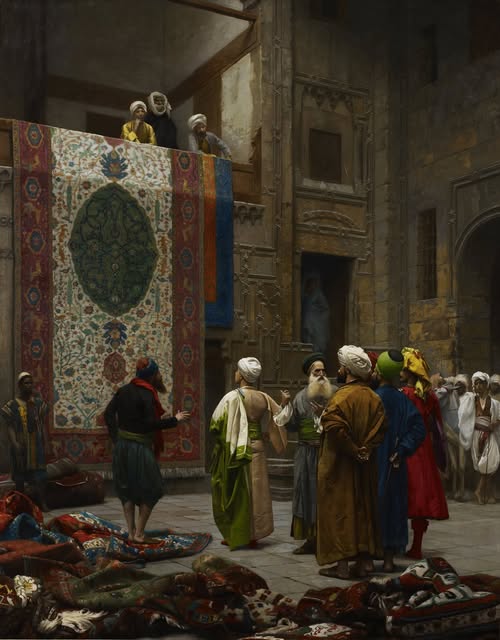A Persian rug is far more than just something you place on the floor—it is a masterpiece that blends history, art, and culture into one. For centuries, these rugs have been celebrated for their beauty, craftsmanship, and durability. Even in the age of modern manufacturing, the Persian rug continues to be a favorite among homeowners, collectors, and interior designers. But what exactly makes it so enduring and special?
The most striking feature of a Persian rug is its design. Each rug tells its own story through patterns, colors, and motifs that often carry deep symbolic meaning. Floral designs may represent beauty and nature, while intricate geometric patterns can symbolize harmony and balance. These designs are not just decorative; they are part of a storytelling tradition that has been passed down for generations. Every detail is intentional, making each rug unique in both appearance and meaning.
One of the reasons a Persian rug stands out is the way it is made. These rugs are traditionally hand-knotted, with each knot tied individually by skilled artisans. Depending on the size and complexity of the pattern, the process can take several months or even years to complete. This painstaking method results in unmatched detail and durability. Unlike mass-produced carpets, no two Persian rugs are identical, which means each piece is truly one of a kind.
The choice of materials adds to the charm of a Persian rug. Most are woven from high-quality wool, known for its softness, warmth, and resilience. Some luxury pieces also include silk, which gives a delicate sheen and allows for more intricate designs. Natural dyes, derived from plants, roots, and minerals, give Persian rugs their deep, lasting colors. Over time, these colors often develop a richer patina, enhancing the rug’s beauty rather than diminishing it.
Durability is another reason why Persian rugs are treasured. When properly cared for, they can last for decades, even centuries. Many become cherished family heirlooms, passed down from one generation to the next. Antique Persian rugs are especially valued, not only for their craftsmanship but also for the history they carry. While most modern rugs wear out after a few years, a Persian rug grows in character and beauty with age.
Aside from being a work of art, a Persian rug is highly practical. The dense weave and thick pile make it comfortable to walk on and help insulate a room. It can also absorb sound, creating a quieter and more peaceful environment. In colder months, a Persian rug adds warmth, while in warmer climates, the natural fibers keep it breathable and comfortable. Whether placed in a living room, bedroom, or hallway, it offers both style and functionality.
A Persian rug is also incredibly versatile in home décor. In traditional interiors, it enhances the richness and warmth of the space. In modern or minimalist settings, it becomes a striking statement piece that adds depth and personality. Its timeless design allows it to blend seamlessly with a wide range of color schemes and furniture styles. It can be the focal point of a room or a subtle element that ties all the other pieces together.
What makes owning a Persian rug even more special is its cultural significance. These rugs have been woven for more than 2,500 years, with each region developing its own distinctive patterns and weaving styles. The craft is often passed down within families, preserving the techniques and traditions that make Persian rugs so unique. Buying a Persian rug is more than just acquiring a decorative item—it’s supporting an ancient art form and keeping cultural heritage alive.
Caring for a Persian rug is simple but important. Regular vacuuming helps prevent dirt from settling deep into the fibers. Rotating the rug every few months ensures even wear, especially in areas with heavy foot traffic. Professional cleaning every few years can restore its luster and keep the colors vibrant. It’s also wise to avoid prolonged exposure to direct sunlight to prevent fading. With a little care, a Persian rug can remain as stunning as the day you bought it.
Another appealing aspect of a Persian rug is its investment value. While most household items lose value over time, a well-maintained Persian rug can actually appreciate, especially if it is rare or antique. Collectors and enthusiasts are always on the lookout for unique pieces, making a Persian rug not just a beautiful addition to your home but also a smart long-term investment.
In today’s fast-paced world, where mass-produced goods dominate the market, a Persian rug is a reminder of the value of handmade craftsmanship. Each one is the result of countless hours of work, attention to detail, and dedication to quality. It is a piece of history that you can see, touch, and walk on every day. Bringing one into your home means surrounding yourself with beauty, tradition, and artistry that will never go out of style.
Whether you are buying your first Persian rug or adding to a growing collection, the experience is more than just shopping—it’s finding a piece that speaks to you personally. It’s about choosing a rug whose patterns and colors resonate with your taste, and knowing that it will be part of your home’s story for years to come.
A Persian rug is not just a floor covering—it is a living piece of art, a symbol of heritage, and a source of comfort. It brings elegance to any room, warmth to any home, and meaning to any space. That is why, century after century, it remains one of the most treasured and timeless pieces you can own.





Comments